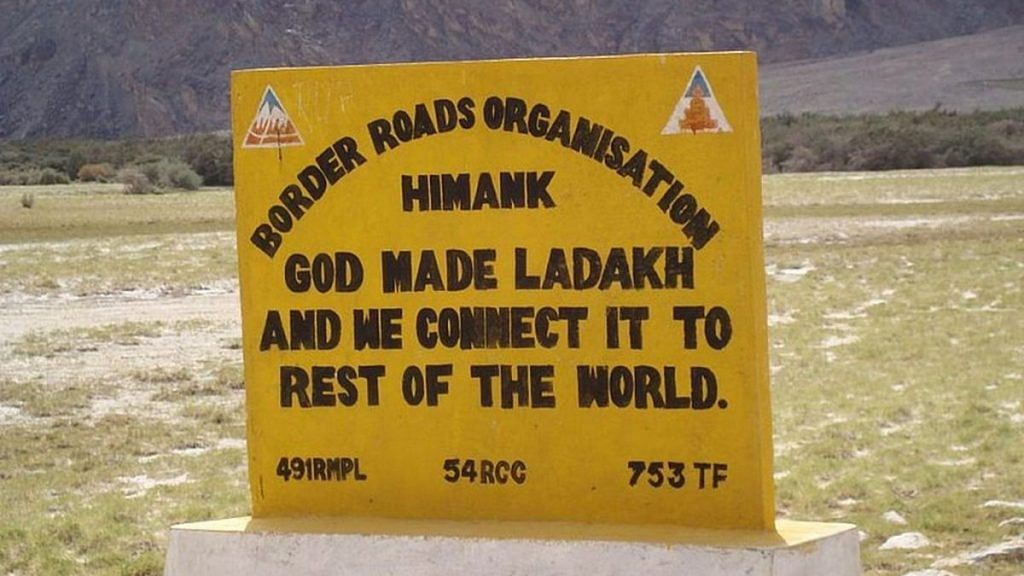New Delhi: India and China have held military talks through established channels, amid continued friction at the Line of Actual Control in eastern Ladakh, where troops from both sides have been challenging each other’s patrol on a daily basis. But sources told ThePrint that a solution is yet to be agreed upon.
Sources said the talks were held Tuesday, and that more will take place.
Clashes on the evening of 5 May, which left several soldiers injured on both sides, have led to tensions on the LAC. A large group of Chinese soldiers armed with sticks and stones attacked Indian troops on the northern bank of the Pangong lake, and destroyed some small temporary structures, setting off fresh tension along the LAC.
On 10 May, it was reported that even though the official disengagement happened on 6 May, additional troops have been moved up by both sides.
India and China have also built up additional infrastructure to cater to the increased number of troops, including setting up tents, sources said, adding that China has also moved in several vehicles and more monitoring equipment, and set up about 80 tents.
ThePrint had reported on 14 May that Indian and Chinese armies were working out the dates for the next formal discussions between “higher military authorities” in the Ladakh sector to sort out the tensions arising out of the recent violent face-off in the area.
Chinese state media reported that their troops have made the “necessary moves” and “enhanced control measures” at the Galwan Valley.
Also read: IAF’s Sukhois on sorties in Ladakh amid tensions with China but no jets ‘scrambled’
No face-off
While there is no “face-off” in a literal sense, additional troops have been stationed on either side of the LAC.
“There is no face-off. But whenever a situation arises, soldiers are moved from one location to another, depending on the need. No additional troops have been brought in from any other sector, but juggling of strength has taken place,” a source explained.
While Army chief Gen. M.M. Naravane has said there is no link between the clash in eastern Ladakh on 5 May and a fist-fight between troops in north Sikkim, multiple points of friction have come up in the eastern sector.
“Both sides continue to patrol through their perceived area of LAC and both continue to stop the other. However, no physical clash has taken place since the evening of 5 May,” a source said.
Sources explained that this is a regular feature during summer time, and proper channels have been established to ensure that the situation does not get out of hand.
Construction riled up China
Sources said India and China have increased the frequency of patrols along the LAC in eastern Ladakh, and also along the Pangong lake.
The 5 May clash between the troops happened on the northern bank of the lake, which resulted in several casualties on both sides. A clash had taken place in the same area last year too.
However, the main bone of contention in the sector this time is a series of border infrastructure construction activities that India is carrying out near the Galwan river in eastern Ladakh. Even though the construction is taking place nearly 10 km inside the perceived LAC, the Chinese have been objecting to it.
The road construction activities are important to India from a military point of view, vis-a-vis the key base Daulat Beg Oldi in sub-sector north in eastern Ladakh.
India’s Border Roads Organisation had built the Shyok-DBO road last year, much to China’s discomfort.
But sources say what really riled up the Chinese was the construction of a bridge over the ‘nallah’ (rivulet), which would also be useful to the locals.
Chinese state media had reported that the Indian side “built defence fortifications and obstacles to disrupt Chinese border defence troops’ normal patrol activities, purposefully instigated conflicts and attempted to unilaterally change the current border control situation”.
Also read: Pakistan’s 40-yr-old Gilgit-Baltistan dam project could finally be a reality, with China help
